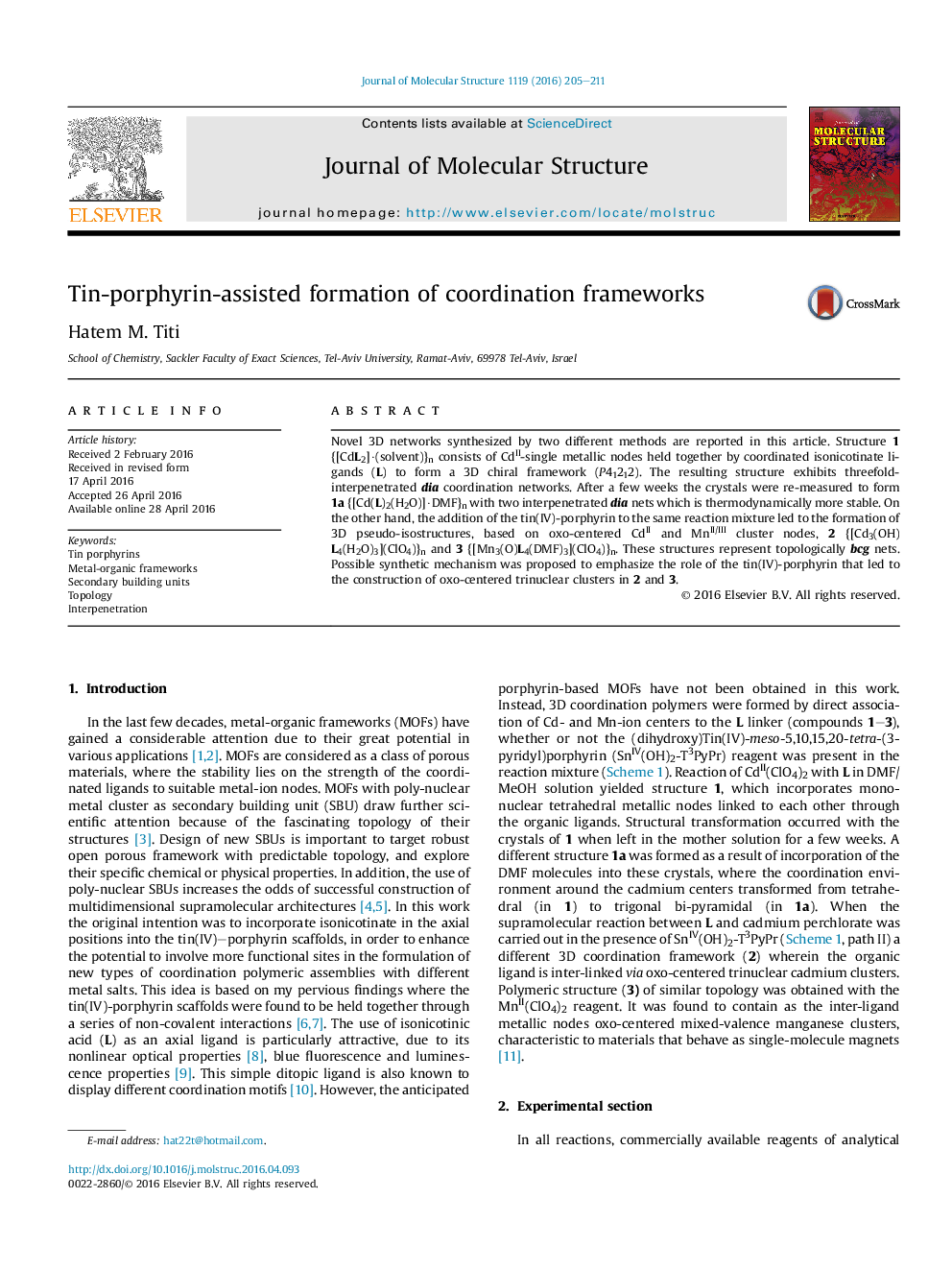| Article ID | Journal | Published Year | Pages | File Type |
|---|---|---|---|---|
| 1404782 | Journal of Molecular Structure | 2016 | 7 Pages |
•Synthesis and characterization of three new metal organic frameworks.•3D coordination polymers based on Cadmium and Manganese metal ions.•Solvent driven structural transformation.•The influence of the tin(IV)-porphyrins on the formation of the coordination networks.•A mechanism proposal for the role of the porphyrin in the reaction mixture.
Novel 3D networks synthesized by two different methods are reported in this article. Structure 1 {[CdL2]·(solvent)}n consists of CdII-single metallic nodes held together by coordinated isonicotinate ligands (L) to form a 3D chiral framework (P41212). The resulting structure exhibits threefold-interpenetrated dia coordination networks. After a few weeks the crystals were re-measured to form 1a {[Cd(L)2(H2O)]·DMF}n with two interpenetrated dia nets which is thermodynamically more stable. On the other hand, the addition of the tin(IV)-porphyrin to the same reaction mixture led to the formation of 3D pseudo-isostructures, based on oxo-centered CdII and MnII/III cluster nodes, 2 {[Cd3(OH)L4(H2O)3](ClO4)}n and 3 {[Mn3(O)L4(DMF)3](ClO4)}n. These structures represent topologically bcg nets. Possible synthetic mechanism was proposed to emphasize the role of the tin(IV)-porphyrin that led to the construction of oxo-centered trinuclear clusters in 2 and 3.
Graphical abstractThe formation of new 3D coordination frameworks with metal ions and isonicotinic acid is affected by the presence of the tin(IV)-porphyrin mediator.Figure optionsDownload full-size imageDownload as PowerPoint slide
